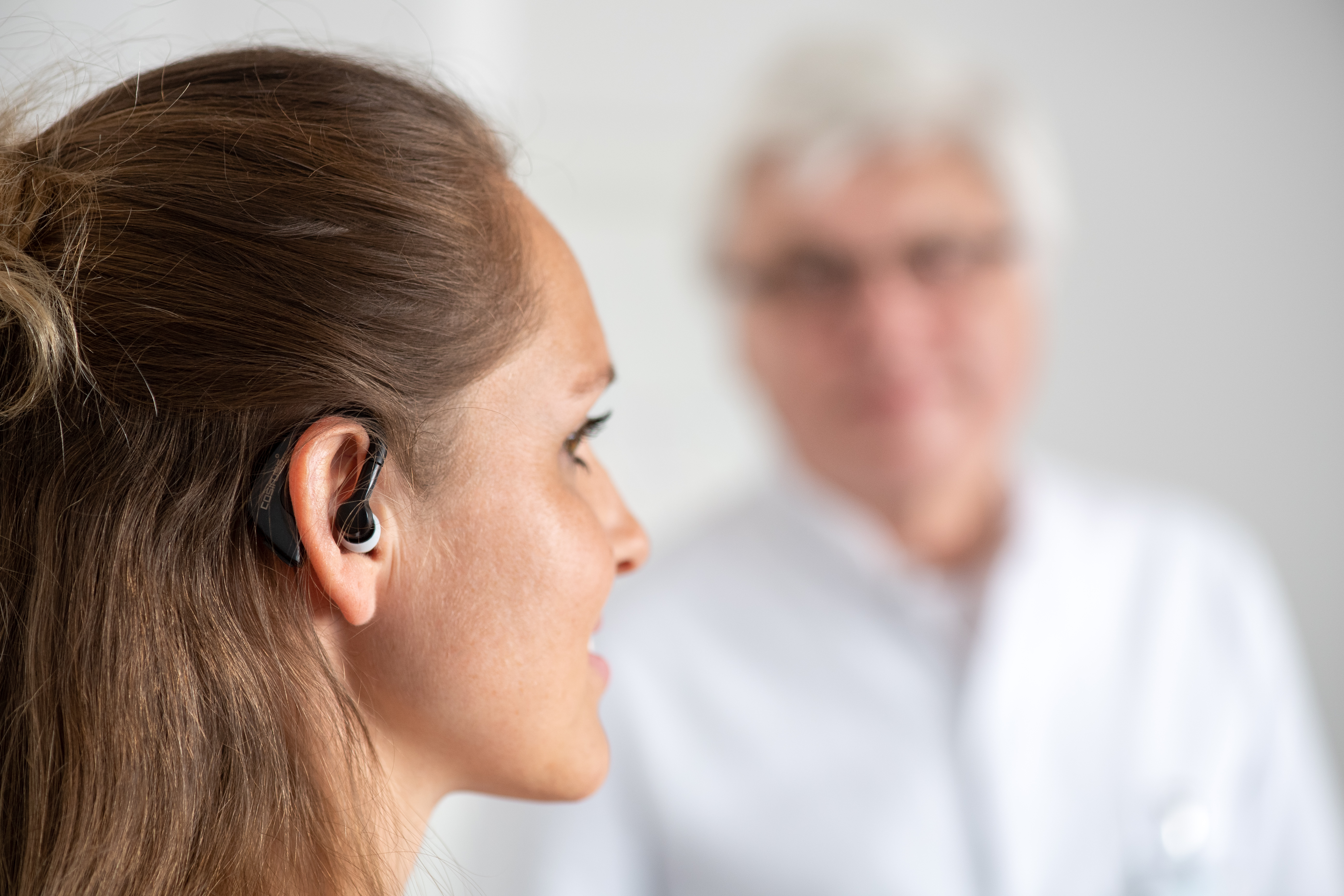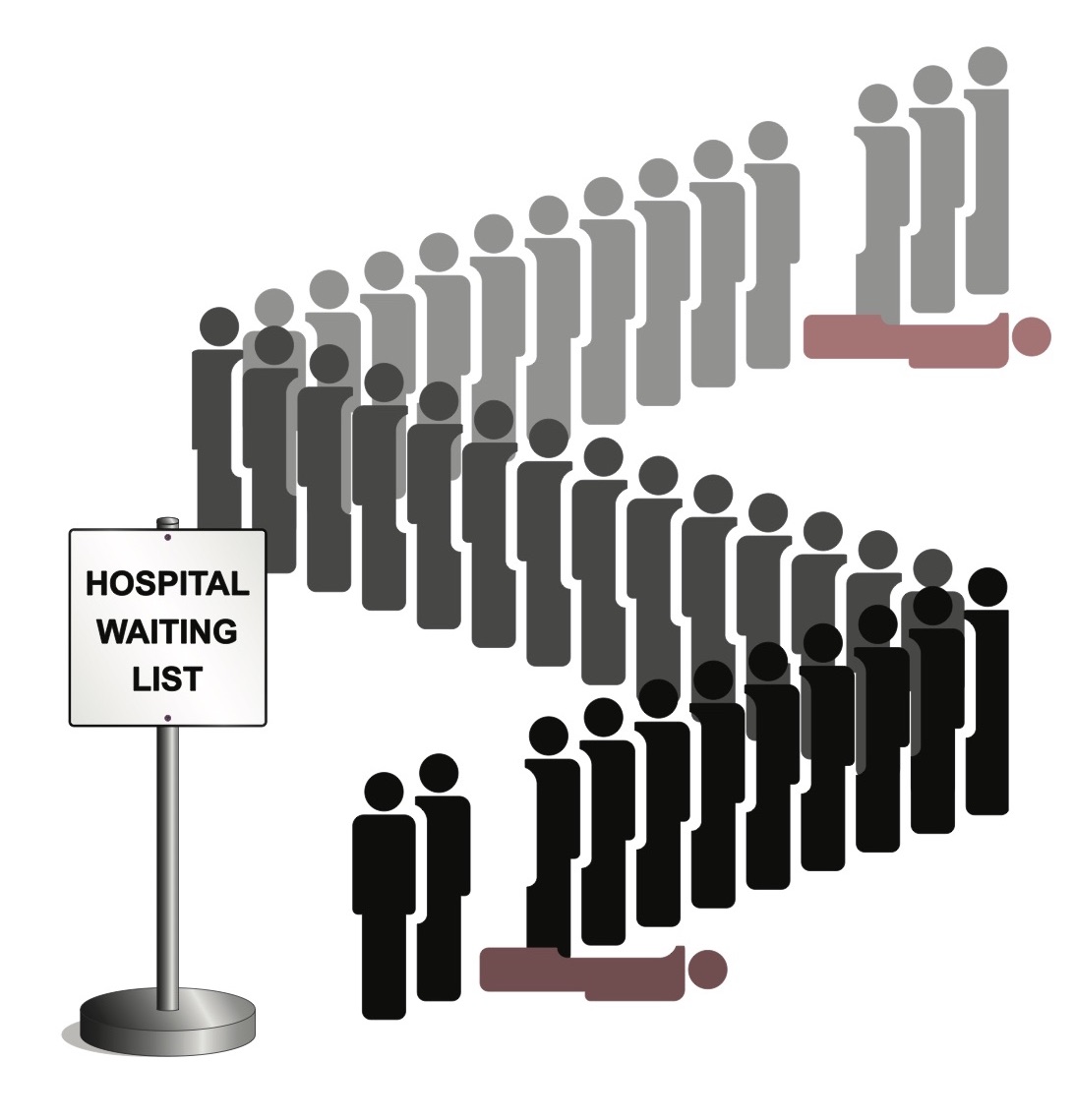Telemedicine has inherent benefits for patients but also risks and must be used selectively
 Telemedicine can be perfect for some, but disastrous for others
Telemedicine can be perfect for some, but disastrous for others
Most doctors have historically held the position and would still agree that ‘telemedicine’ is less diagnostically accurate than in-person consultations. Even with the rapidly evolving and detailed online questionnaires and next generation patient care navigation, there is also the risk that a more remote approach can increase health inequalities and barriers to accessing appropriate treatments.
Pic- Courtesy of Technical University of Munich "Telemedicine keeps patients out of hospital".
Nonetheless, Total triage is now largely embedded despite the concerns from some GPs. GP Dr Helen Salisbury talking about the widening digital divide has said, "Arguably, the patients who need us most—older patients and those with poorer health literacy—are the least likely to fill in a form, reinforcing the inverse care law".
The COVID-19 pandemic has shifted focus onto the increased use of telemedicine across a wide range of clinical settings. The ability of remote health systems to streamline access to services and make better use of resources is obvious. However, the question is; does it also inevitably bring about better care?
As Amazon's CMO Prof Rowland Illing summarises, there are four key aims for overhauling digital systems as follows:
1. Improved patient experience,
2. Improved clinician experience,
3. Better health outcomes, and
4. Lower cost of care.
Telemedicine is one of those developments that impacts directly on each of the above. The patient (or clinician's) experience will evidently not be improved if a diagnosis is missed, the health outcome will clearly not be better and costs due to the necessity of longer stays in hospital or additional treatments - may rocket.
According to The Times tensions are growing between GPs and hospital doctors, who say signs of illnesses such as cancer are being missed due to the lack of a physical examination. Furthermore, some coroners have reported that the virtual consultations have "resulted in delays of cancer diagnoses, leading to earlier deaths".
A long time coming
On the other hand, telemedicine and tele-health along with remote patient monitoring (or 'health-tech'), have the potential to revolutionize how healthcare is delivered and received. This will be achieved by improving patient access to a choice of appropriate levels of care, reducing the number of hospital readmissions, improving both the patient and HCP experience, improving medical outcomes and reducing costs.
The 'digital revolution' has been a long time coming. The NHS Director General for Informatics Christine Connelly said back in 2010: "The information we have changes our perspective and influences the decisions we make each and every day. The time has come to apply these principles to the delivery of health and care services. Building from a base of accurate care records the Information Revolution will deliver more informed patients, more engaged professionals, more efficient organisations and, ultimately, improved outcomes."
However, when revolution happens, the speed of change can be phenomenal. For example, the eSanjeevani telemedicine platform was implemented in 19 days across four states. The pilot was then scaled up to cover all of India. This meant that more than one billion people or 80% of the Indian population had access to (virtual) care. According to Rowland Illing, "the system now provides more than 6,000 consultations a day across 23 states, involving 4,000 doctors in 150 outpatient clinics".
Similarly in the UK patients are now benefiting from on-line systems such as TotalDoctor.
What is happening in practice?
Researchers at the University of Cambridge, working with a wider national team including expert consultants, patients and psychologists, have examined both the benefits and disadvantages of telemedicine for patients. Their study, published recently in Rheumatology, is the first telemedicine study to have combined data from rheumatology patients, GPs and hospital clinicians.
Between April 2021 and July 2021, a total of 1,340 patients and 111 clinicians completed online surveys. The team also conducted in-depth interviews with 31 patients and 29 clinicians. The majority of patients were from the UK (96%) and had inflammatory arthritis (32%) or lupus (32%).
little research previously on the impact on patient care
Melanie Sloan, lead author from the Primary Care Unit at the University of Cambridge, said: “The pandemic has had a major impact on the ability of healthcare professionals to see their patients face-to-face, and this has led to a significant increase in the number of telemedicine consultations. While these are undeniably safer in terms of COVID risk, there had been little research previously on the impact on patient care, particularly for more complex conditions.”
Convenience of remote consultations
Over 60% of clinicians and patients found telemedicine more convenient than face-to face consultations, pointing to benefits that included COVID-19 safety, no travelling and reduced waiting times as benefits. This was especially the case for those in employment, and for patients feeling well for quick check-ins, prescriptions or administrative queries or those who struggled physically to get to appointments.
Difficulty in building trust
Telemedicine made it more difficult for patients and clinicians to build a trusting medical relationship, according to 90% of clinicians and 69% of patients – although if both parties had previously established a trusting relationship, this made it easier.
Clinicians highlighted the importance of a quick response to ‘flaring’ patients with a rapidly worsening condition, but only about half of patients were confident that they would receive a quick response to an urgent request for medical advice within 24-48 hours from their GP or hospital team. Many patients were grateful for prompt responses despite the challenges facing clinicians, but others reported still struggling to get through administrative systems to receive any kind of response or appointment.
Can telemedicine be over-used?
However, some respondents, particularly clinicians, raised concerns that telemedicine may be over-used by the NHS and hospital management as a cost and time-saving measure, rather being than in patients’ best interests. Clinicians – only 3% of whom felt telemedicine overall was better than face-to-face – and patients had rarely been consulted as to their preferences. Clinicians felt the NHS and managers wanted a higher proportion of appointments to be telemedicine than their own preferences.
Dr Sloan added: “Our research exposes the inherent risks and benefits of telemedicine for patients with complex conditions, which may have important implications for patients who have other serious or unpredictable long-term conditions".
What can be done to mitigate risk?
Dr Sloan goes onto to say, “As the NHS develops a telemedicine strategy, we hope there will be a thorough assessment of the clinical and psychological risks and steps taken to mitigate those risks, as well as action to address the possibility of worsening existing health inequalities for those less likely to be able to benefit from remote consultations.”
Appropriate patient selection is key
The research team concluded that telemedicine’s acceptability and safety can be improved by training for clinicians, offering patients more choice, careful selection of those patients to offer telemedicine to, and further consultation with clinicians and patients on its use.
administrative systems that are not yet efficient enough
Senior author of the study, Dr Felix Naughton, from the University of East Anglia, added: ‘’Of greatest concern was the great variability in accessibility to care. Approximately half of all patients felt they would not receive a prompt response when very unwell, often citing increased barriers due to some remote contact and administrative systems that are not yet efficient enough to cope with the sudden move towards telemedicine.’’
One senior clinician study participant summed up the overall feelings of many:
"The rapid digitalisation and use of telemedicine must stay, but appropriate patient selection is key, it is perfect for some but disastrous for others."
Paternalistic legacy
The NHS has meant that UK patients have different attitudes to healthcare when compared to patients in other countries. Due to an NHS paternalistic legacy, patients have become heavily reliant on their GP for access to any level of care. This is a critical factor that also affects the nature of the digitisation process across primary and secondary care, especially with regard to the necessity for informed consent. Patients get better care when better informed.
The three critical medical steps:
1. Timeliness and accuracy of the diagnosis
2. Choice of specialist referral
3. Patient option review and informed consent
There can be many points of medical interaction and intervention, all of which can have profound impacts on the quality of care. However, the three most fundamental aspects of medicine lie first of all in the detection and accuracy of the diagnosis, secondly in choice of specialist referral and finally in the level of patient involvement in the process of diagnosis and review of treatment options.
Patients need to know - what are the treatment choices?
There are always different treatment options and patients need to be involved in what is on offer. For example, many cancers can be treated by traditional surgery or via more modern interventional radiological approaches, such as image-guided tumour ablation. Treatments for enlarged prostate also now include minimally invasive methods including prostate artery embolisation (PAE). Even when the decision has been made over the preferred choice of treatment, every surgeon or specialist will have their own preferred approaches - see my choice of hip replacement, where nine different hip surgeons have been asked the same questions, and we compare their answers.
To realise this means patients must have more say and more choice
Patients should have choice at every stage of the journey - where they register with a GP, where they go for tests, who they see for treatment, and what care or treatment they receive from any willing provider. Above all, they should be able to change these choices at any stage.With the shift to digital medicine and reduced involvement from GPs, patients will inevitably have to become more proactive, and will need better access to authoritative medical information.
GPs as gate-keepers to the NHS and the shift to direct access specialist care
Traditionally GPs have been the gatekeepers to the NHS and so their role has been fundamental to how patients are initially directed into relevant clinical services, and to some extent, the subsequent navigation through diagnostic and hospital services. This access to treatment differs from other countries where patients will more usually self-refer to who they consider to be an appropriate specialist. In the UK, patients who are concerned about a diagnosis have largely relied on their GP to advise them on appropriate specialist care. There is therefore a challenge to ensure that patients are aware of all their treatment options, do not necessarily adopt the 'one world view' of a single specialist, and insist on full 'informed consent'.
 In the UK now too, especially in some sectors, there is a big shift to direct access specialist care. Due to the waiting lists patients are increasingly going directly to private hospitals and by-passing the NHS altogether. Other sectors, such as menopause, which actually lends itself quite well to telemedicine is currently experiencing a huge boom in direct access patients.
In the UK now too, especially in some sectors, there is a big shift to direct access specialist care. Due to the waiting lists patients are increasingly going directly to private hospitals and by-passing the NHS altogether. Other sectors, such as menopause, which actually lends itself quite well to telemedicine is currently experiencing a huge boom in direct access patients.
Integrating GPs, diagnostics and hospitals
Bridging traditional structural and hierarchical boundaries that exist across all parts of the health system will be fundamental in bringing about real change. Due to the way that the NHS was historically structured, primary (GPs) and secondary (hospitals) care are two quite distinct entities that are not capable of communicating fluently with each other. For the entire patient pathway, the ideal health-tech system should therefore ideally be able to integrate all parts of the diagnostic and treatment process.
This would allow the way in which patients navigate between departments and specialisms to be streamlined, removing tiers of bureaucracy and waste. It would also facilitate better clinical decision- making by allowing access to data at every stage of the treatment pathway and hence improve quality of care and outcomes.
A system that allows patients to take control of their own historical and current electronic health record (EHR) would bring about real empowerment and many new initiatives have been launched. Due to difficulties in accessing legacy EHRs, some new online providers get around the problem by asking patients to provide as many records as they can.
Historically all personal patient records in the UK have been kept by the GP. As most GPs in the UK use a practice management system (PMS) called EMIS, it means that EMIS effectively have control over the records. This raises some critical points i.e. who has permission to have access to (y)our patient records? If increased sharing happens (as is already the case with eConsult), how can the records be kept confidential? How is corruption and theft prevented? After all, as has been generally reported your medical record may be worth more than your credit card.
Sharing the electronic health record
The EHR is central to the whole process of digitisation, which is why there is so much pressure to allow the records to be shared. Unless you opt out of this process, your records will be shared. Previous deadlines for permission have now been extended. The NHS is currently asking all patients if they are happy to have their personal data shared. "You can stop your confidential patient information being used for research and planning. Find out how to make your choice." They state, "If you're happy with your confidential patient information being used for research and planning you do not need to do anything". In other words, if you are not, you do! Unless you opt out, your records will be shared.
Secure access to the right selection of patient data is going to be critical moving forward. Advanced analytics and machine learning, will improve the overall medical approach and assist in creating measurable outcomes.
The time of a woman’s life when her ovaries stop releasing an egg (ovum) on a monthly cycle, and her periods cease
Full medical glossary





